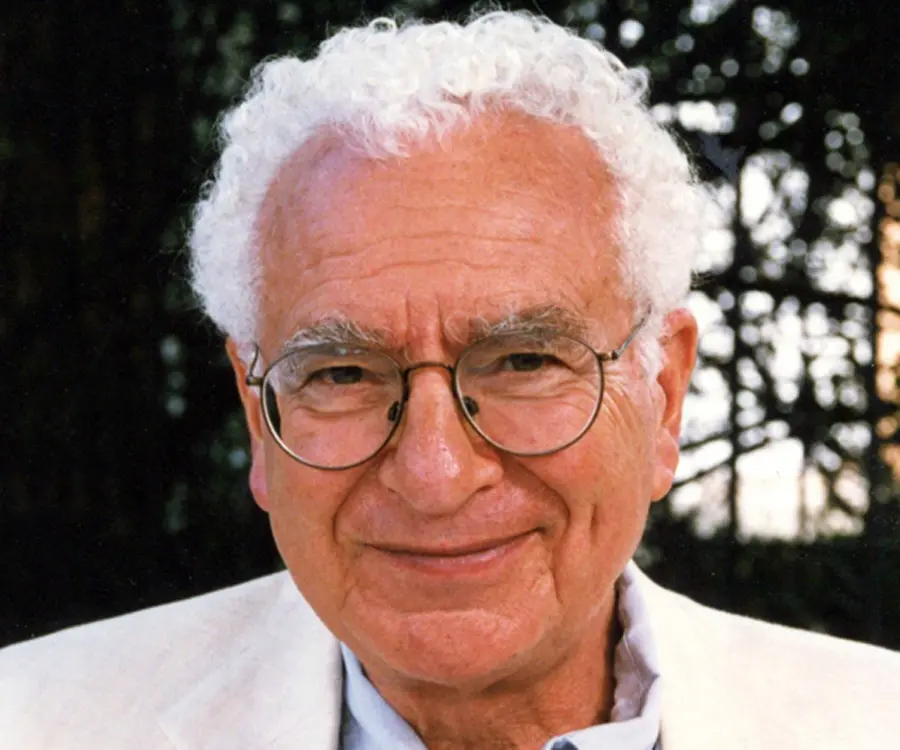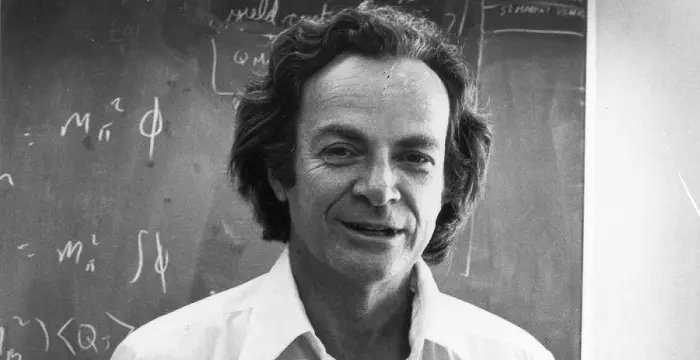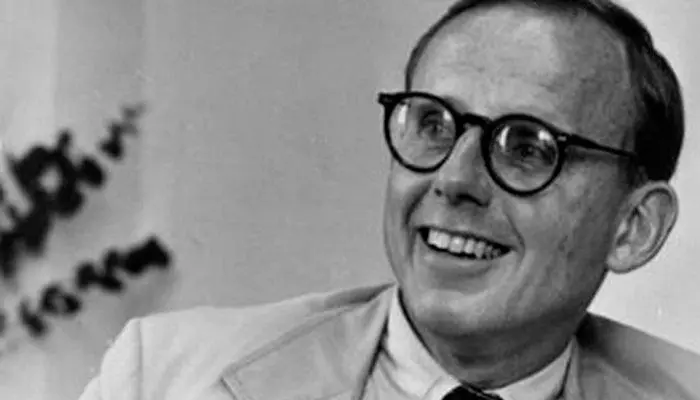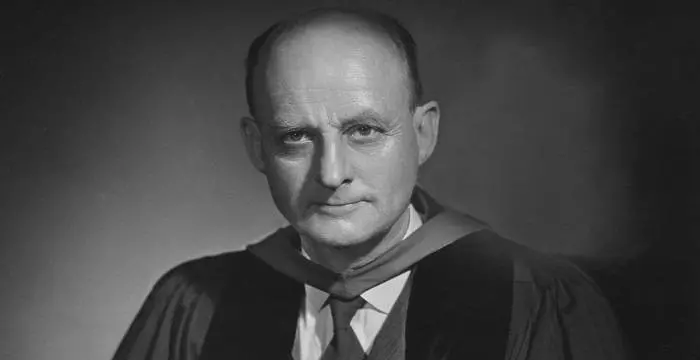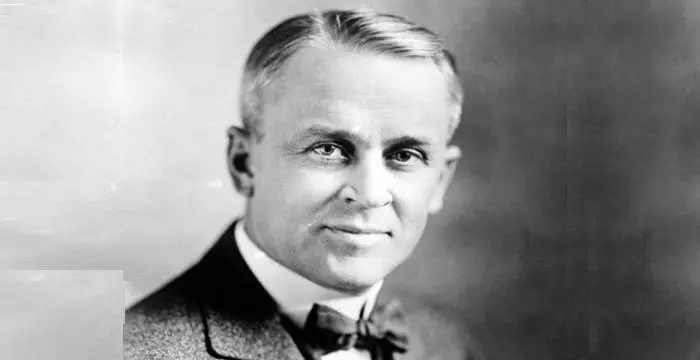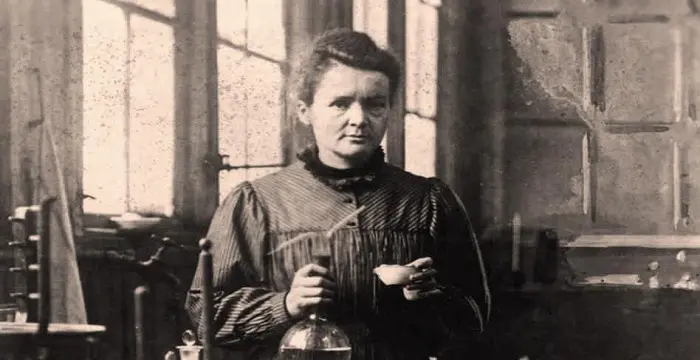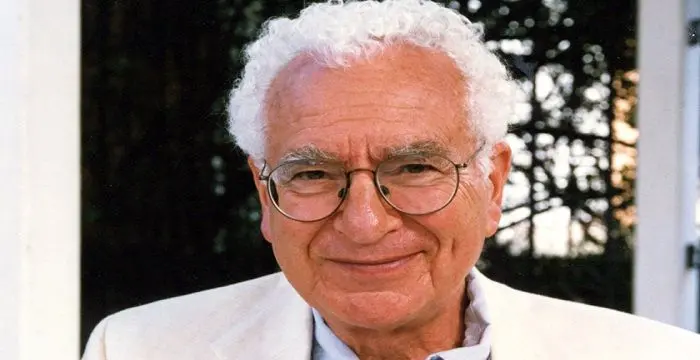
Murray Gell-Mann - Yale University, Family and Personal Life
Murray Gell-Mann's Personal Details
Murray Gell-Mann is an American physicist, who won the Nobel Prize in Physics for his work in the classification of subatomic particles
| Information | Detail |
|---|---|
| Birthday | September 15, 1929 |
| Nationality | American |
| Famous | Massachusetts Institute Of Technology, Yale University, Scientists, Physicists |
| Spouses | J. Margaret Dow (m. 1955; her death 1981) Marcia Southwick |
| Known as | Murray Gell-mann |
| Childrens | Elizabeth Sarah Gell-Mann, Nicholas Southwick Levis, Nicholas Webster Gell-Mann |
| Universities |
|
| Notable Alumnis |
|
| Founder / Co-Founder |
|
| Birth Place | Manhattan, New York City, U.S. |
| Height | 160 |
| Gender | Male |
| Father | Arthur Isidore Gell-Mann |
| Mother | Pauline (née Reichstein) Gell-Mann |
| Net Worth | $153 million as of Jun 2,2017 |
| Sun Sign | Virgo |
| Born in | Manhattan, New York City, U.S. |
| Famous as | Physicist |
// Famous Scientists
Juliane Koepcke
Juliane Koepcke is a German-Peruvian biologist, who was the lone survivor among the 92 passengers and crew of the ill-fated LANSA Flight 508 that crashed in the Peruvian rainforest on 24 December 1971. Know more about her life in this biography.
Henry Cavendish
Henry Cavendish was a theoretical chemist and physicist, renowned for discovery of hydrogen and calculation of the mass of earth. To know more about his childhood, profile, timeline and career read on
Konstantin Tsiolkovsky
Konstantin Tsiolkovsky was a Russian rocket scientist and a pioneer of astronautics. This biography provides detailed information about his childhood, family, personal life, career, achievements, etc.
Murray Gell-Mann's photo
Who is Murray Gell-Mann?
Murray Gell-Mann is an American physicist, who won the Nobel Prize in Physics for his work in the classification of subatomic particles. Interestingly, as a school boy, he never liked physics and took up the subject as his major just on whim. He was only fifteen years old when he entered the University of Yale as an undergraduate student. Fortunately, he soon began to find the subject enthralling and earned his BS when he was barely eighteen. After receiving his PhD from MIT he spent a brief period at the Institute of Advance Study for his post doc. He later joined Institute for Nuclear Studies, University of Chicago, where he introduced his concept of ‘strangeness’. However, the longest period of his working life has been at California Institute of Technology in Pasadena. Later he cofounded Santa Fe Institute in New Mexico and joined it as one of its distinguished faculties. Although he was a renowned physicist and has introduced many new concepts, he was interested in a wide range of subject and towards the end of his career he spearheaded the ‘Evolution of Human Languages Program at Santa Fe Institute.
// Famous Massachusetts Institute Of Technology
Dolph Lundgren
Dolph Lundgren is a famous Swedish actor, film-maker, screenwriter and martial artist. This biography offers detailed information about his childhood, family, personal life, etc.
Joseph E. Stiglitz
Joseph E. Stiglitz is a Nobel Prize winning American economist. Check out this biography to know about his childhood, family life, achievements and other facts related to his life.
Richard Feynman
Richard Feynman was a Nobel Prize winning American physicist who proposed the theory of quantum electrodynamics. To know more about his childhood, career, profile and timeline read on
Childhood & Early Life
Murray Gell-Mann was born on September 15, 1929 in New York City into a family of Jewish immigrants. They had their original home in Czernowitz, an ancient city inthe Austro-Hungarian Empire. It is now known as Chernivtsi and is part of Ukraine.
His father, Arthur Isidore Gell-Mann taught English as Second Language. His mother’s name was Pauline (née Reichstein) Gell-Mann. Although they had to struggle hard during the Great Depression, Arthur made sure that his son had proper education.
Murray had his schooling at Columbia Grammar & Preparatory School. As a child, he was greatly interested in mathematics. Over the time, he began to grow a wide range of interest. However, he did not like physics at school and this was only subject, in which he always received poor grades.
Nonetheless, Murray graduated from CGPS as class valedictorian at the age of 15 and won a scholarship to Yale University. Although at that time, his interest lay in archeology and linguistics his father urged him to take up science.
Ultimately, he enrolled at Jonathon Edwards College at Yale and whimsically chose physics as his major. He was very soon captivated by the subject. In 1947, he took part in William Lowell Putnam Mathematical Competition and came out second.
Murray received his B.S degree in physics in 1948. He then enrolled at Massachusetts Institute of Technology for his PhD and wrote his doctoral thesis on sub atomic particles. He received his degree in 1951 and the same year, joined the Institute of Advance Study at Preston for his post doc.
Career
In 1952, he joined Institute for Nuclear Studies, University of Chicago as an instructor in physics. He was promoted to the post of Assistant Professor in 1953 and an Associate Professor in 1954.
During this period, Gell-Mann mainly worked on the cosmic ray particles like kaons and hyperons. These particles, which had recently been discovered, behaved rather strangely. For example, many of these new particles decayed more slowly and the physicists could not explain the reason.
To explain such phenomenon, Gell-Mann introduced his concept of ‘strangeness’. It is a quantum property, which accounted for the decay pattern of certain mesons. Incidentally, Japanese physicist Kazuhiko Nishijima also worked independently on the same problem and came to the same conclusion almost at the same time.
In 1955, Gell-Mann joined California Institute of Technology (Cal Tech) in Pasadena as a member of faculty and was promoted to the post of a full professor within a short period. At the age of thirty he was the youngest person to hold such post in the history of the Institute.
In and around that time, around one hundred new particles had been discovered in the nuclei of an atom. The characteristics and behaviors puzzled the physicists to such an extent that some began to refer to them as ‘particle zoo’.
In 1961, Gell-Mann proposed that the particles could be classified into a group of eight by their electrical charge and strangeness number. He named it ‘Eightfold Way’ after the Eightfold Way of Buddhism. It brought order out of the bedlam created by discovery of so many new particles.
In the same year, he also formulated Gell-Mann–Okubo mass formula. It provides a sum rule for the masses of hadrons within a specific multiplet, determined by their isospin and strangeness. It may be noted that both Gell-Mann and Okubo worked on it independently.
He next started investigating the process, which created the regular pattern in the properties of sub-atomic particles. In 1964, he proposed that all these particles in the nuclei were made up of even smaller particles holding fractional charge. He named them ‘quarks’. He had come across the term in a book called ‘Finnegans Wake’.
For a long time, many physicists refused to accept this theory. Even the Nobel citation did not mention his discovery of quarks. It was not until in late sixties that the ‘quark theory’ was experimentally proven. Subsequently, it was accepted by the scientific community.
In 1967, Gell-Mann was appointed the Robert Andrews Millikan Professor of Theoretical Physics. He then continued working on his quark theory and in 1972, identified the force that holds the quarks together inside the nuclei. He named it ‘color charge’ and assigned a quantum number to it.
Later, he along with Heinrich Leutwyler, coined the term, ‘Quantum Chromodynamics’ which was a quantum field theory of quarks and gluons. It accounted for all nuclear particles and strong interaction. Next, he started concentrating on the structure of weak interaction of subatomic particles.
In 1984, Gell-Mann left his job at California Institute of Technology and joined Santa Fe Institute, which he had cofounded with many other well-known scientists. Here he continued working with same distinction.
In the 1990s, his interest turned to study of complexity. A large part of his research at Santa Fe Institute focused on the theory of complex adaptive systems. Later he led the ‘Evolution of Human Languages Program at the Institute.
Around this time he took to writing. His famous creation ‘The Quark and the Jaguar: Adventures in the Simple and the Complex’ was published in September 1995. In 2000 he became a member of the board of directors of Encyclopædia Britannica, Inc.
Apart from his academic posts Gell-Mann has also held other important posts. For example, he was a director of the MacArthur Foundation from 1979 to 2002. He was appointed to the President’s Committee of Advisors on Science and Technology in 1994 and served in that capacity till 2001
Major Works
The concept of ‘strangeness’ is one of Gell-Mann’s most important contributions to science. He suggested that when a sub-atomic particle interacts by means of a strong electromagnetic force the strangeness is conserved. He suggested that these particles be given strangeness numbers so that they could be evaluated properly.
The ‘Eightfold Way’ is another of Gell-Man’s important contributions to science. Through this concept Gell-Mann organized the newly discovered subatomic baryons and mesons into octets and paved the way for further study.
Awards & Achievements
Throughout his life Murray Gell-Mann has received innumerable prizes and honors. Among them is the Nobel Prize in Physics, which he received in 1969 for his work in the field of elementary particles.
Gell-Mann also received American Physical Society – Dannie Heineman Prize for Mathematical Physics in 1959, Academy of Achievement Golden Plate Award in 1962, Ernest O. Lawrence Award in 1966, Franklin Medal in 1967 and National Academy of Sciences – John J. Carty Award in 1968.
Later he received Research Corporation Award in 1969, World Federation of Scientists – Erice Prize in 1990, Albert Einstein Medal in 2005 and Helmholtz-Medal of the Berlin-Brandenberg Academy of Sciences and Humanities in 2014.
In addition, he had been elected a Foreign Member of the Royal Society (ForMemRS) in 1978. He was also honored with United Nations Environment Programme Roll of Honor for Environmental Achievement (The Global 500) in 1988. In 2005, he was declared the Humanist of the Year by American Humanist Association.
Personal Life
In 1955, Gell-Mann married British archeologist J. Margaret Dow. The couple had two children, a daughter, Elizabeth Sarah Gell-Mann and a son, Nicholas Webster Gell-Mann. Margaret died in 1981.
In 1992, Gell-Mann married Marcia Southwick. He has a stepson named Nicholas Southwick Levis from this union. He now lives in Santa Fe.
Trivia
Professor Gell-Mann is more than just a reputed physicist. He interests lay in a wide range of subject such as bird watching, antique collections, archeology, natural history etc. Historical linguistic as well as the psychology behind creative thinking also interest him a great deal.
// Famous Yale University
Samuel P. Huntington
Samuel Phillips Huntington was a famous American political scientist who proposed the controversial thesis of ‘The Clash of Civilizations’. Find out more about his life in this biography
Reinhold Niebuhr
Reinhold Niebuhr was a German-American theologian, intellectual and political commentator who wrote the famous book, ‘Moral Man and Immoral Society’. This biography provides information about his profile, childhood, life and timeline.
Jennifer Connelly
Jennifer Connelly is an Academy Award winner American actress who started out as a child artist and reached the epitome of her film career with the movie ‘A Beautiful Mind’.
Murray Gell-Mann's awards
| Year | Name | Award |
|---|---|---|
Other | ||
| 0 | Nobel Prize in Physics (1969) | |
| 0 | ForMemRS (1978) | |
| 0 | Dannie Heineman Prize for Mathematical Physics (1959) | |
| 0 | E. O. Lawrence Award (1966) | |
| 0 | John J. Carty Award (1968) | |
Murray Gell-Mann biography timelines
- // 15th Sep 1929Murray Gell-Mann was born on September 15, 1929 in New York City into a family of Jewish immigrants. They had their original home in Czernowitz, an ancient city inthe Austro-Hungarian Empire. It is now known as Chernivtsi and is part of Ukraine.
- // 1947Ultimately, he enrolled at Jonathon Edwards College at Yale and whimsically chose physics as his major. He was very soon captivated by the subject. In 1947, he took part in William Lowell Putnam Mathematical Competition and came out second.
- // 1948 To 1951Murray received his B.S degree in physics in 1948. He then enrolled at Massachusetts Institute of Technology for his PhD and wrote his doctoral thesis on sub atomic particles. He received his degree in 1951 and the same year, joined the Institute of Advance Study at Preston for his post doc.
- // 1955In 1955, Gell-Mann joined California Institute of Technology (Cal Tech) in Pasadena as a member of faculty and was promoted to the post of a full professor within a short period. At the age of thirty he was the youngest person to hold such post in the history of the Institute.
- // 1955 To 1981In 1955, Gell-Mann married British archeologist J. Margaret Dow. The couple had two children, a daughter, Elizabeth Sarah Gell-Mann and a son, Nicholas Webster Gell-Mann. Margaret died in 1981.
- // 1961In 1961, Gell-Mann proposed that the particles could be classified into a group of eight by their electrical charge and strangeness number. He named it ‘Eightfold Way’ after the Eightfold Way of Buddhism. It brought order out of the bedlam created by discovery of so many new particles.
- // 1964He next started investigating the process, which created the regular pattern in the properties of sub-atomic particles. In 1964, he proposed that all these particles in the nuclei were made up of even smaller particles holding fractional charge. He named them ‘quarks’. He had come across the term in a book called ‘Finnegans Wake’.
- // 1967 To 1972In 1967, Gell-Mann was appointed the Robert Andrews Millikan Professor of Theoretical Physics. He then continued working on his quark theory and in 1972, identified the force that holds the quarks together inside the nuclei. He named it ‘color charge’ and assigned a quantum number to it.
- // 1969Throughout his life Murray Gell-Mann has received innumerable prizes and honors. Among them is the Nobel Prize in Physics, which he received in 1969 for his work in the field of elementary particles.
- // 1984In 1984, Gell-Mann left his job at California Institute of Technology and joined Santa Fe Institute, which he had cofounded with many other well-known scientists. Here he continued working with same distinction.
- // 1992In 1992, Gell-Mann married Marcia Southwick. He has a stepson named Nicholas Southwick Levis from this union. He now lives in Santa Fe.
- // Sep 1995 To 2000Around this time he took to writing. His famous creation ‘The Quark and the Jaguar: Adventures in the Simple and the Complex’ was published in September 1995. In 2000 he became a member of the board of directors of Encyclopædia Britannica, Inc.
// Famous Physicists
Henry Cavendish
Henry Cavendish was a theoretical chemist and physicist, renowned for discovery of hydrogen and calculation of the mass of earth. To know more about his childhood, profile, timeline and career read on
Walter Kohn
Nobel Laureate Walter Kohn was an Austrian-born American theoretical chemist and physicist. Check out this biography to know about his childhood, life, achievements, works & timeline.
Nikola Tesla
Nikola Tesla was a Serbian-American inventor, best known for his development of alternating current electrical systems. This biography of Nikola Tesla provides detailed information about his childhood, life, achievements, works & timeline.
Robert Andrews Millikan
Robert Andrews Millikan was an eminent American experimental physicist who won the Nobel Prize for Physics in 1923 for his work on photoelectric effect. Check out this biography to know about his childhood, life, achievements, works & timeline.
Isaac Newton
Isaac Newton was an English scientist and mathematician, who discovered gravitation and Newtonian Mechanics. Read this biography to find more on his life.
Marie Curie
Marie Curie was a Physicist and Chemist, who was world renowned for her work on radioactivity. She also was the winner of two Nobel Prize. Read this biography to get info about her life and profile.
Murray Gell-Mann's FAQ
What is Murray Gell-Mann birthday?
Murray Gell-Mann was born at 1929-09-15
Where is Murray Gell-Mann's birth place?
Murray Gell-Mann was born in Manhattan, New York City, U.S.
What is Murray Gell-Mann nationalities?
Murray Gell-Mann's nationalities is American
Who is Murray Gell-Mann spouses?
Murray Gell-Mann's spouses is J. Margaret Dow (m. 1955; her death 1981) Marcia Southwick
Who is Murray Gell-Mann childrens?
Murray Gell-Mann's childrens is Elizabeth Sarah Gell-Mann, Nicholas Southwick Levis, Nicholas Webster Gell-Mann
What was Murray Gell-Mann universities?
Murray Gell-Mann studied at Massachusetts Institute Of Technology (MIT),Yale University, 1951 - Massachusetts Institute of Technology, Yale University, Columbia Grammar & Preparatory School
What was Murray Gell-Mann notable alumnis?
Murray Gell-Mann's notable alumnis is Massachusetts Institute Of Technology (MIT), Yale University
Which company or organization was founded by Murray Gell-Mann?
Murray Gell-Mann was the founder/co-founder of Santa Fe Institute
How tall is Murray Gell-Mann?
Murray Gell-Mann's height is 160
Who is Murray Gell-Mann's father?
Murray Gell-Mann's father is Arthur Isidore Gell-Mann
Who is Murray Gell-Mann's mother?
Murray Gell-Mann's mother is Pauline (née Reichstein) Gell-Mann
What is Murray Gell-Mann's sun sign?
Murray Gell-Mann is Virgo
How famous is Murray Gell-Mann?
Murray Gell-Mann is famouse as Physicist



